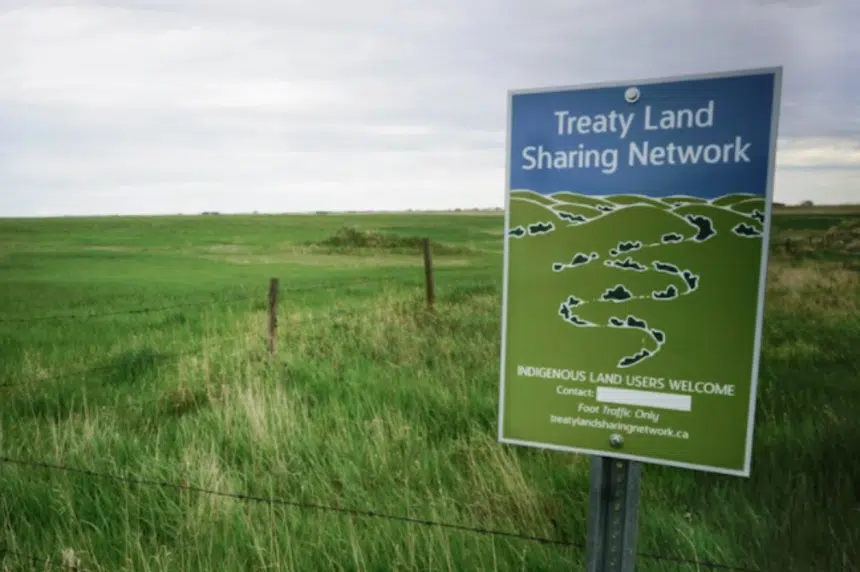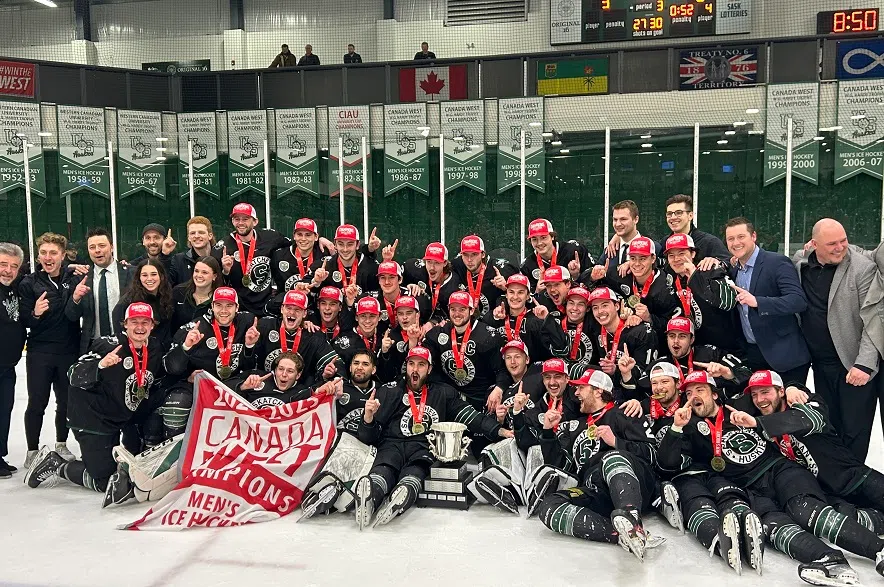Half a decade ago, Bladworth-area producer Mary Smillie sat at a small gathering.
It was following the death of Battlefords-area’s Colten Boushie — and the acquittal of Gerald Stanley — and it focused on rebuilding the relationship between Saskatchewan producers and the Indigenous community. Smillie said she knew something had to change.
It was at this gathering that Smillie first heard of an upcoming project: the creation of a Treaty Land Sharing network for both parties.
The network allows settler producers — the term Smillie used for farmers — and ranchers the ability to request and put up a sign indicating its lands can be accessed by those in the Indigenous community to gather plants and medicine, to hunt and for ceremony.
Speaking from her operation near Bladworth Thursday, she told 650 CKOM that it was time to move forward in a good way.
“This group was looking for a counterpoint to provide opportunity for rural people to improve their relationships with First Nations,” Smillie said.
“Part of my first lessons was first appreciating what Treaties were and are for us in our relationships as Canadians with Indigenous people. I took the invitation to read the Truth and Reconciliation 94 calls to action. And one of them was to understand and learn more about Treaties.”
She then took the step to a reconciliation circle put on by the Office of the Treaty Commissioner, which she said left her learning a lot. She was then invited by another group — the original creators of the Treaty Land Sharing Network’s group — inviting her to be a part of the coordinating committee.
Thursday, the new signs were unveiled on the project. They include the contact number for the landowners, along with a note of “Foot Traffic Only” and the website of the project.
On the webpage, you can also access a map of all locations in the province. As of early Sunday afternoon, 14 locations are listed on the website.
Those locations span from south of Moose Jaw to northwest of North Battleford near the Alberta border to north of Yorkton.
Producers are able to connect with the network through the web page as well. It also has a directory for Indigenous land users detailing what is accessible within the lands.
Brad Desjarlais was also a part of the Thursday announcement, originally hearing of the project from the Office of the Treaty Commissioner. He is a subsistence hunter and has been for the past 40 years.
Desjarlais is originally from the Fishing Lake First Nation, and he shared his thoughts following the announcement.
“I’m still in awe (of the network), it’s almost hard to believe,” he said.
“It will give us more places we can access our rights. We can build bridges between First Nations and the land owners, and show them we’re not always doing illegal stuff.”
Desjarlais said the network is a tough concept to grasp. Growing up he was always told that farmers don’t want Indigenous people on their lands.
He said he’s heard stories of game wardens being called on those that did access the lands, yet the producers that have signed on didn’t treat Desjarlais like that.
“These farmers are showing us the opposite,” he said.
“This is only the start. There’s a long way to go in Saskatchewan. This is just the beginning.”
Smillie also offered the same hope. She said she hopes within her lifetime, she’s able to see a world where these Land Sharing Network signs are no longer needed.
Her hope continued when speaking about what’s next for the network, and what’s next for society in general.
“Once you learn about your habits of thinking, your habits of communicating, and realize that maybe they’re not actually based on a lived experience that’s going on right now — maybe, it’s just an old way of thinking that needs to be renewed. I think that’s our opportunity as individuals (to) affect change in racism, sexism, colonialism. We need to understand what are our habits of thinking as settlers,” she said.
“We have an opportunity through learning … which I feel very positive will change the way we make decisions about our relationships with First Nations.”
Smillie said she’s looking forward to having conversations with her neighbours once the signs are up. She hopes to successfully change the opportunities for Indigenous peoples to live in an equitable way.
“As it was intended, by treaty.”







